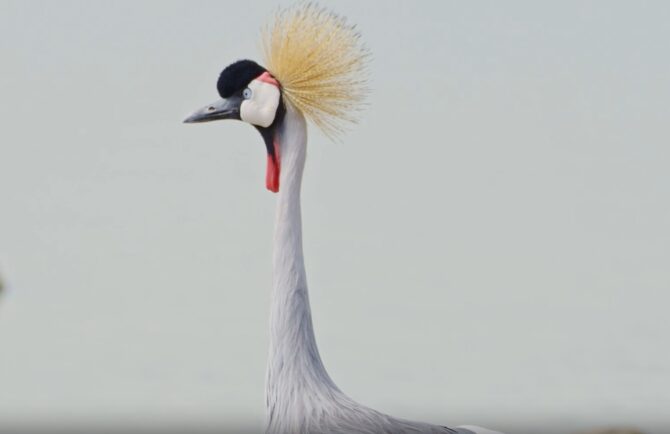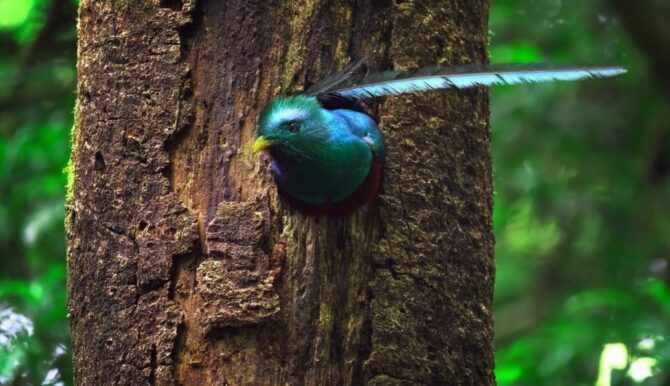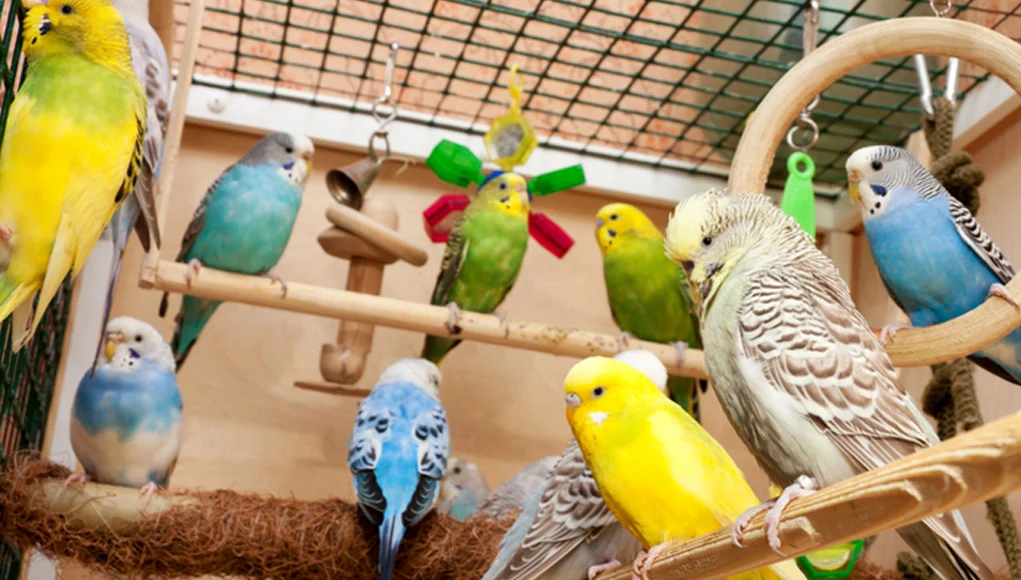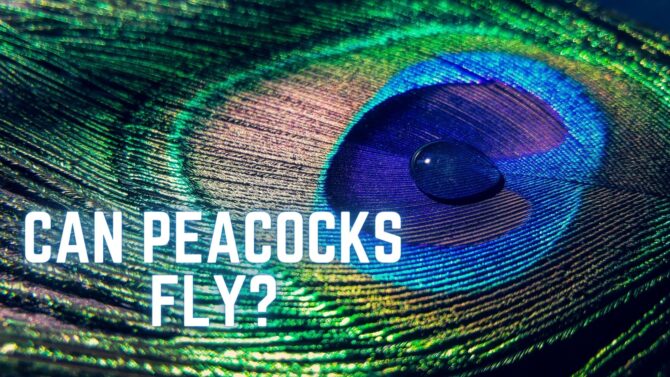Birds: Facts, Characteristics, Types & Pictures
Birds are warm-blooded theropod vertebrates that comprise the class aves and are characterized by beaked jaws, lightweight skeletons, and feather-covered bodies.
This animal class has body modifications that support flight in most species, including the respiratory and digestive systems.
However, others that inhabit aquatic habitats have adaptive features for swimming.
Birds have a sustained existence, coming from a long line of dinosaurs and making up the only known extant theropods.
As you read this article, you will learn the characteristics, types, and other interesting facts about the class aves.
The aforementioned is one of the facts about the class aves.
Interesting Facts About Birds
- According to National Geographic, there are about 9,700 bird species worldwide, with about fifty to four hundred and thirty billion in total population.
- While arthropods have cuticles covering their bodies, the class aves species have feathers covering their skins. Aves remain the only known animal class with feathers, and all birds have feathers. While most species use their feathers for flight, even flightless species have feathers for thermal insulation and UV protection, depending on the color. They enhance communication and protection via camouflage as a form of anti-predator adaptation.
- Remarkably, we can find birds in every inhabitable continent, implying that you will find a bird in every continent except Antarctica. The Peregrine Falcon is a diverse specie that inhabits every continent, including the arctic regions of Asia, Europe, and North America, to deserts.
- Some birds can mimic sounds. The African Gray Parrot can mimic human speech thanks to its significant brain capacity, while ravens can mimic their predators’ sounds.
- Birds communicate with vocal and non-vocal methods, using squeaks, warbles, trills, singing, gurgles, rattles, whistles, and other sounds. They also communicate with their colors; the blackbird is a typical example of this claim.
Characteristics of Birds
Taxonomists group species with similar characteristics, prompting the placement of some organisms into the class aves due to some features typical of the group.
Reproduction
The mode of reproduction characterizes each specie into various classes, implying that how a specie reproduces determines if it falls within the class aves.
Domestic birds like fowls and ducks lay hard-shelled eggs; the same process goes for other class members.
Nevertheless, other factors are typical of aves’ reproduction than just them laying hard-shelled eggs.
Birds practice internal fertilization, where the males insert sperm into the female reproductive tract and fertilize the egg.
Some bird species, like ducks and geese, have long penises, but others, including flamingos, eagles, and penguins, have no penises.
These species without penises use a cloaca, a posterior opening for digestive, urinary, and reproductive purposes to insert sperm, while their females lay eggs with it.
Egg growth follows after fertilization, where the hard-shelled egg develops inside the female until it is laid in a nest.
The egg’s development period within the female varies among the 9,700 species in the class aves, between a few days and weeks, depending on the bird.
Interestingly, most bird species like fowls and penguins try to woo a mate via a performance as in fowls or by gifts like penguins who present pebbles to their desired female.
A successful display melts the heart of a female bird, granting a mating session that leads to new offspring.
Toothless Beaked Jaws
A class of 9,700 members would have dietary preferences, explaining why some birds are carnivores, omnivores, or herbivores.
Some birds feed on other birds, others on insects, reptiles, mucus, fruits, pollen, nectar, grains, or mollusks.
Nevertheless, possessing toothless beaked jaws, a modified feeding mechanism, characterizes the class.
Some birds, like Cardinals, possess conical beaks that help them crack seeds:
- Hawks and falcons have strong, curved beaks that help them yank into their prey’s flesh
- Swans and ducks that swim have flat beaks that help them filter food from the water
- Hummingbirds comfortably collect nectar, thanks to their long, thin beaks, and woodpeckers can drill holes into trees to pick insects without suffering adverse brain impact because of their strong, pointed beaks with shock-absorbing properties.
Feathers
Feathers are unique to birds as the only extant species with this epidermal growth.
Feathers are easy on the eye, beautiful appendages that write the intriguing story of complexity in looks and microstructure.
They aid flight, water-proofing, thermal insulation, and, depending on the color, UV protection.
They enhance communication and protection via camouflage as a form of anti-predator adaptation.
While there are two primary feather types, vaned (exterior feathers) and down feathers (underneath the vaned features), other minor kinds, including the filoplumes and flight feathers on the wings and tail, are sub-grouped under the vaned feathers.
The down feathers provide thermal insulation and aid buoyancy in aquatic birds.
Lightweight Skeleton
Aeronautic engineers build airplane bodies with aluminum because it is lightweight and strong.
Similarly, a bird’s skeleton or structural frame relative to its lift-generating surfaces is crucial to its metabolic flight cost.
This thesis explains why birds have lightweight skeletons — to minimize flight energy. In all but name, weight-saving modifications regarding bone shape and weight define the evolution of aves and their flying ability.
Mammals like bats, amphibians like flying frogs, and insects like bees can independently sustain themselves in the air as they develop the ability to fly to adapt to their needs through several years of evolution.
Nevertheless, they fall behind birds in duration and efficiency, thanks to the birds’ lightweight biological materials in bones and feathers.
High Metabolic Rate
Soaring and gliding through various wind directions and speeds is energy-demanding, explaining why birds are the energetic lot.
These winged vertebrates have to generate energy to perform their locomotive tasks, resulting in high basal metabolic rates.
Food habits, body weight, and the altitude at which a bird lives determine its metabolic rate.
The hummingbird, weighing 0.009 pounds (4.0 grams) with a reputation as the world’s smallest bird, has the highest basal metabolic rates, prompting it to consume nearly as much nectar as its weight.
Contrastingly, larger birds like the Brown Pelican and Trumpeter Swan do not expend as much energy.
A four-chambered heart
Like mammals, the class aves have a four-chambered heart that allows circulation at low pressure to the lungs and high-pressure pumps to the other parts of the circulatory system.
Unlike amphibians, birds’ fully functional hearts enable them to accomplish their survival and flight tasks, even in the cold.
Remarkably, a bird’s heart is larger in proportion to its body than a mammal’s, especially humans, pumping at a faster rate than a human’s.
A bird’s heart beats between 192 and 396 times per minute.
Molting
Like reptiles shedding their skins and insects molting their cuticles, birds replace their damaged feathers with new ones through molting.
While molting differs by species, most birds molt twice a year, which could be heavy in the spring and fall within five to twelve weeks.
Remarkably, a bird does not replace its feathers at once so that it does not become stranded, cold, and unable to fly or swim properly.
Types & Classification of Birds
- Scientists have grouped aves into two subclasses:
- Archaeornithes (extinct)
- Neornithes (contains extant and extinct species)
Archaeornithes
The earliest subclass of the class aves contains extinct species Archaeopteryx and Archaeornis.
These birds roamed the earth between 252 million and 66 million years ago, during the Mesozoic Era, around the late Jurassic period (about 150 million years ago).
They looked more like reptiles than modern birds, possessing long, bony tails, thirteen or more caudal vertebrae, and reptilian ribcages with small carinas.
They also had toothed beaks and clawed wings (free-fingered forelimbs attached to the wings).
Neornithes
Neornithes include extant and extinct species (e.g., Passenger Pigeon) of the class aves.
This subclass contains modern birds with toothless beaks, short tails, clawless wings, and a well-developed sternum.
Two extant superorders, Palaeognathe and Neognathae, and one extinct superorder, the Odontognathae, are under the Neornithe subclass.
While the extinct subclass Archaeornithes were dinosaur-like with long tails and reptilian ribcages, the extinct Odontognath superorder under the Neornithe subclass was smaller and had short tails.
However, these birds were toothed and retained a few reptilian traits, like possessing an intramandibular joint typical of extant varanid lizards like the Comodo Dragon and the Nile Monitor Lizard, basal snakes, and mosasaurs.
The Palaeognathe superorder comprises flightless birds with primitive skulls.
The Greek name, “paleognath,” translated as Palaeognathe, means “old jaws,” describing these birds’ primogenial skulls.
Ostriches, emus, Extinct Moas (extinct), kiwis, and tinamus are Paleognaths.
The Neognathae comprises modern, toothless, flying birds with developed wings and well-defined flight muscles.
Species’ wings could be long and narrow or short and broad with modifications like webbed toes for aquatic and terrestrial life.
Ducks, albatrosses, cuckoos, and other bird species fall under this superorder.
Frequently Asked Questions
Are all birds aves?
Yes, birds are any of the 9,600 class aves species characterized by beaked jaws, lightweight skeletons, and feather-covered bodies.
Are bats aves?
While bats can execute fully independent flight, they do not have all aves’ characteristics. Bats do not have beaks; they also lack feathers but have fur-covered bodies.
Do aves have scales?
While ancient birds had reptilian traits, discoveries suggest these features were tailored to their skeletal system.
They have long, bony tails, thirteen or more caudal vertebrae, and reptilian ribcages with small carinas. However, they do not have scales. Modern birds do not have scales but feather-covered bodies.
Do birds have teeth?
While early birds had teeth, modern birds have toothed beaks. Remarkably, their beaks are modified for their feeding. Hummingbirds have long, thin beaks that comfortably collect nectar.
Woodpeckers can drill holes into trees to pick insects without suffering adverse brain impact because of their strong, pointed beaks with shock-absorbing properties.
Wrap Up
Years of evolution account for the Aves species we have today, while others have suffered extinction.
While it thrills us to have these animals with us, we are responsible for their continued existence.
Therefore, we should support all conservation efforts to continue the thrills of seeing nature’s diversity.








